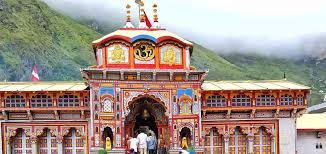Nestled in the rugged terrain of the Garhwal Himalayas, gangotri is a revered pilgrimage destination in the Indian state of Uttarakhand. Situated at an altitude of approximately 3,100 meters (10,200 feet) above sea level, this small town is the origin of the holy River Ganga, which holds immense significance in Hinduism. Gangotri is not just a place of spiritual importance but also a destination known for its breathtaking natural beauty, surrounded by towering snow-capped peaks and dense forests.
The Spiritual Significance of Gangotri
At the heart of Gangotri is the Gangotri Temple, dedicated to Goddess Ganga. According to Hindu mythology, King Bhagirath performed intense penance to bring the celestial river Ganga down to earth to purify the souls of his ancestors. To prevent the earth from being destroyed by the river’s immense force, Lord Shiva caught the river in his matted locks, releasing it gently from his hair. This divine event is believed to have occurred at Gangotri, and the sacred river is worshipped as the goddess Ganga.
The Gangotri Temple is one of the four sacred shrines that form part of the Char Dham Yatra, along with Yamunotri, Kedarnath, and Badrinath. Pilgrims from all over the world visit Gangotri to offer prayers to the goddess and to take a dip in the icy waters of the river, which is believed to cleanse one’s soul of sins.
Natural Beauty and the Source of the Ganga
The actual physical source of the Ganga River is Gaumukh, located about 18 kilometers from Gangotri at the snout of the Gangotri Glacier. Many adventurous pilgrims undertake the challenging trek to Gaumukh to witness the glacier, which resembles the mouth of a cow (hence the name “Gaumukh,” meaning “cow’s mouth”). The trek offers stunning views of the Himalayan peaks, including Shivling, Meru, and Bhagirathi sisters.
The lush green valleys, dense forests of deodar and pine, and the crystal-clear river flowing through the town create an atmosphere of peace and serenity, making Gangotri not only a religious site but also a destination for nature lovers and trekkers.
The Gangotri Temple
Built in the early 18th century by the Gorkha commander Amar Singh Thapa, the Gangotri Temple is a simple yet beautiful structure made of white granite. The temple opens its doors to devotees in the month of May, marking the beginning of the Char Dham Yatra, and remains open until Diwali in October or November. During the winter months, when heavy snowfall makes the region inaccessible, the idol of Goddess Ganga is moved to Mukhba, a village near Harsil, where worship continues.
The temple is especially crowded during festivals like Ganga Dussehra and Diwali, when thousands of pilgrims come to offer their prayers.
Exploring Gangotri
Apart from its religious significance, Gangotri and the surrounding region offer a variety of experiences for nature enthusiasts and adventure seekers:
- Gaumukh Trek: A moderate to challenging trek, the route from Gangotri to Gaumukh offers spectacular views of the Gangotri Glacier and the Himalayan peaks. The trek also passes through scenic landscapes, including forests, rivers, and meadows.
- Bhojbasa: Situated halfway between Gangotri and Gaumukh, Bhojbasa is a popular campsite for trekkers. It offers panoramic views of the surrounding mountains and serves as a base for those heading towards Gaumukh.
- Pandava Gufa: A short trek from Gangotri takes you to Pandava Gufa, a cave believed to have been the resting place of the Pandavas from the Mahabharata during their journey to the Himalayas.
- Surya Kund and Gauri Kund: These are natural rock formations and waterfalls near the Gangotri temple. Surya Kund is particularly famous for its magnificent waterfall, where the Ganga cascades through rock formations.
- Harsil: Located about 25 kilometers from Gangotri, Harsil is a quaint Himalayan village known for its unspoiled beauty. Surrounded by apple orchards, it’s a perfect place to relax and soak in the peaceful ambiance of the Himalayas.
Best Time to Visit Gangotri
The best time to visit Gangotri is from May to October, when the temple is open, and the weather is pleasant. The months of May and June see a large influx of pilgrims, while September and October offer a quieter experience with fewer crowds. The monsoon season (July to August) should be avoided due to the risk of landslides and road blockages.
Gangotri is a place where spirituality and nature converge, offering pilgrims and travelers an opportunity to connect with their inner selves and the divine. Whether you’re visiting for religious reasons or to explore the natural beauty of the Himalayas, Gangotri promises an unforgettable experience. With the assistance of a reliable travel agency in Haridwar for Char Dham Yatra, your pilgrimage to Gangotri can be a smooth and enriching journey into the heart of India’s spiritual heritage









